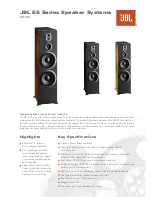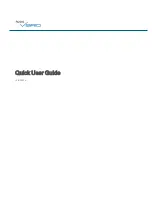
V1.0
180 MULTI-PROCESS MIG-ARC-TIG WELDER
8611311
Visit www.princessauto.com for more information
7
FUMES AND GASES
WARNING! Stop welding and move to a location with ventilation if your eyes, nose or throat
become irritated. This indicates the ventilation is not adequate to remove the fumes. Do not
resume welding until the ventilation is improved and the discomfort ceases. Seek medical
attention if the symptoms do not diminish or if the welder experiences nausea, dizziness
or malaise.
Welding may produce hazardous fumes and gas during the welding process. A well ventilated
work area can normally remove the fumes and gases, but sometimes the welding produces
fumes and gases that are hazardous to your health.
1. Only work in a confined space if the area is well ventilated or while wearing a respirator or
an air-supplied respirator. Welding fumes and gases can displace air and lower the oxygen
level causing injury or death. Be sure the breathing air is safe. Always have a trained
watchperson nearby.
1.1 If ventilation in the work area is poor, use an approved air-supplied respirator. All the
people in the work area must also have air-supplied respirators.
1.2 Oxygen displacement can occur in confined areas when the shielding gas fills the area
and pushes out air.
1.2.1 Argon, Propane and Carbon Dioxide are heavier than air and will fill a confined
space from the bottom up.
1.2.2 Helium and natural gas are lighter than air and will fill a confined space from the
top down.
2. Avoid positions that allow welding fumes to reach your face. Always attempt to weld ‘upwind’
of the workpiece with the airflow across the face of the welder. Airflow from behind may create
a low pressure area in front of the welder and draw the fumes to the person.
3. Ventilate the work area to remove welding fumes and gases. The fumes and gases should
be drawn away from the user.
3.1 Ventilation should be enough to disperse fumes, but not enough to disturb the
shielding gas or flame during welding.
3.2 Ventilation exhaust shall be directed to a non-work area to avoid exposing other people
to potential toxic or dangerous fumes.
3.3 Air removed from the work area by the ventilation system must be replenished with fresh
air to avoid oxygen starvation or a build-up of fumes or gases. Only use air to provide
ventilation. Any other combination of gases may be explosive or toxic to people in the
work area.
3.4 Ventilation methods that remove gas and fumes from the welding point before they
reach the welder’s face should be given preference.
4. Avoid welding in a work area that has vapours from cleaning, degreasing or any spraying
operations. The heat and light from welding can react with the vapour and form irritating or
potentially toxic gases. Wait for the vapours to disperse.
5. Consult the manufacturer's Safety Data Sheets (SDS) for instructions and precautions
about metals, consumables, coatings, cleaners and degreasers.
5.1 Do not weld on coated metals such as galvanized, lead or cadmium plated steel, unless
the coating is removed from the weld area. The coatings and any metals containing
these elements can give off toxic fumes during the welding process.
5.2 Do not weld, cut or heat lead, zinc, cadmium, mercury, beryllium or similar metals without
seeking professional advice and inspection of the welding area’s ventilation. These metals
produce extreme toxic fumes, which can cause discomfort, illness and death.








































